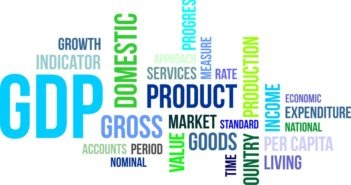- US GDP grew by an impressive 3.2%, with less impressive components.
- A rate hike seems less likely after the release.
- The US Dollar dropped but has room to rise
The US economy grew by an annualized rate of 3.2% in Q1 2018 according to the initial release. The figure came out above the official expectations (2.1%), the Atlanta Fed ones (2.7%) and above the whispers (around 3%).
The outstanding headline stands out amid government shutdown that weighed on the economy in January. It also stands out against the fact that the first quarter of the year is usually weak. This is the first time the US economy grew by more than 3% in Q1 since Q1 2013.
So why did the US Dollar drop? 4 reasons
1) Buy the rumor, sell the fact: The greenback advanced on the upbeat Durable Goods Orders published on Thursday. Expectations were already sky high and the greenback had little room to rise.
2) Weak inflation: The headline PCE, or deflator, came out at 0.6% after 1.5% beforehand. Core PCE came out at only 1.3% against 1.8% beforehand.
3) Rise in inventories: When inventories are replenished in one quarter, they tend to be depleted in the following one. Inventories contributed 0.65% to growth, and subtracting this figure makes the headline less attractive.
4) Weak consumption growth: Personal consumption rose by 1.2% annualized in Q1, against 2.5% beforehand. The US economy is centered around consumption, and this component is the leading one.
Will the USD continue falling? Not so fast.
No hike
The largest economy in the world outperformed its peers in the past few quarters. The US economy was only marginally hit by the trade war with China. Exports are up 3.7%, and imports are down by the same scale.
The US consumer only took a short break, and the high level of employment helped avoid a downturn in the housing market.
The Federal Reserve hit the brakes on rate rises in March, completing its dovish shift and moving to neutral. Markets went further and expected a rate cut to come sooner or later, perhaps as soon as this year.
This seems somewhat premature now. The Fed’s insistence on patience means a rate hike is not their preferred path, but cutting the FFR has no justification, despite the markets’ wishes, as well as those of President Donald Trump.
What does it mean for the US Dollar?
A steady Fed can keep the US Dollar bid, but the USD is not alone.
The European Central Bank expects and perhaps prays for a recovery in the second half of the year, The Fed does not need to wait: the US economy is growing fast already now, in what is usually a slow quarter.
And the list goes on. The BOE is paralyzed by the Brexituncertainty. The BOJ just pledged to keep rates lower for longer. The Bank of Canada went to neutral, and the Reserve Bank of Australia is seen as cutting interest rate as soon as in the next meeting.
On this background, the USD remains “the cleanest shirt in the dirty pile” or even a just a plain clean shirt.
All in all, there is room for optimism for USD bulls.
Get the 5 most predictable currency pairs
